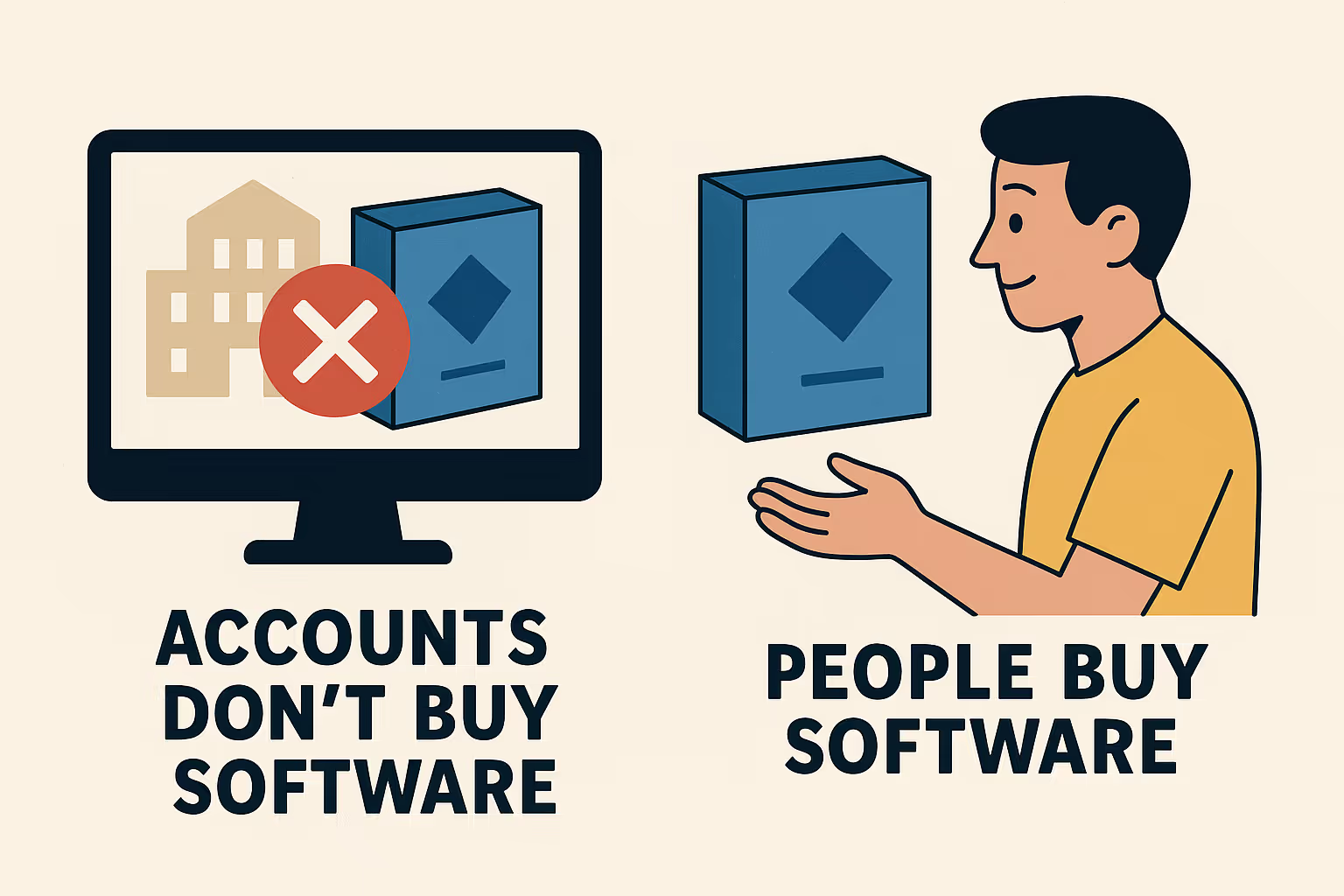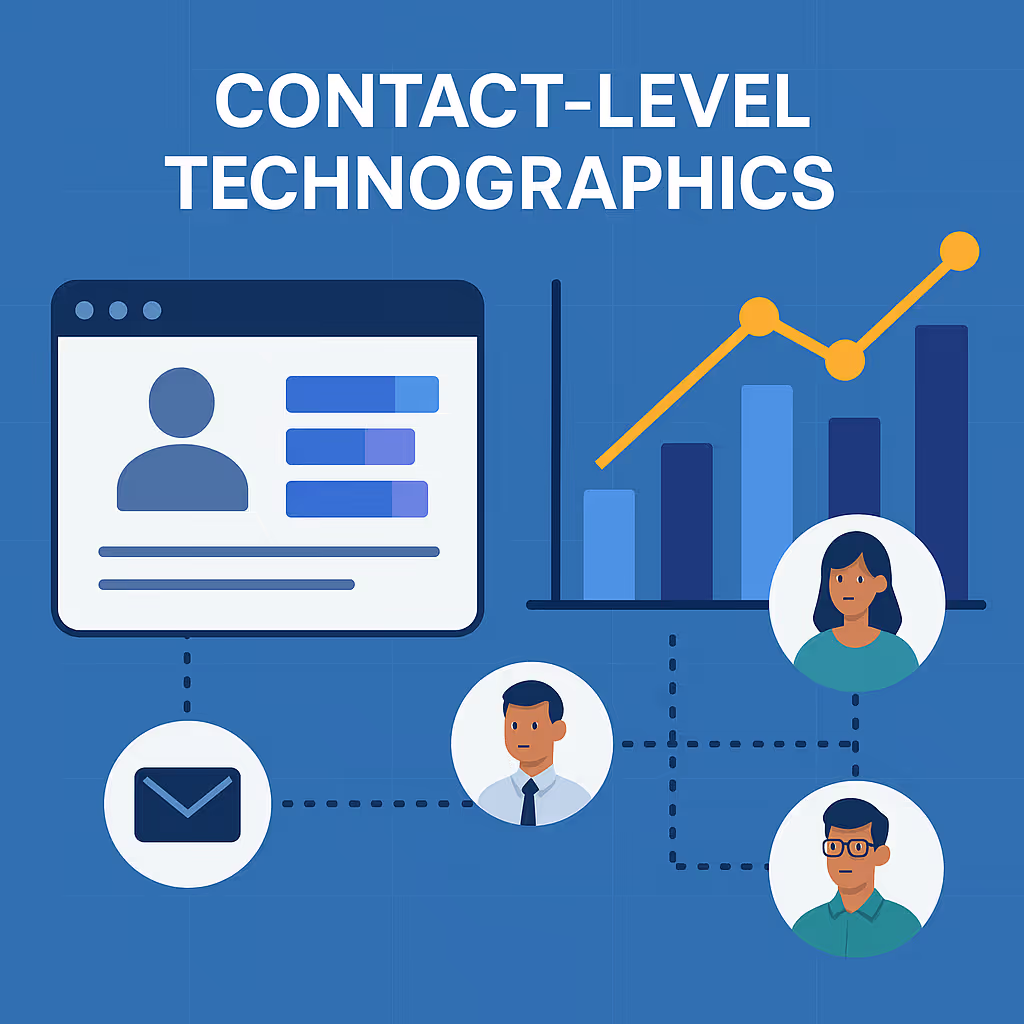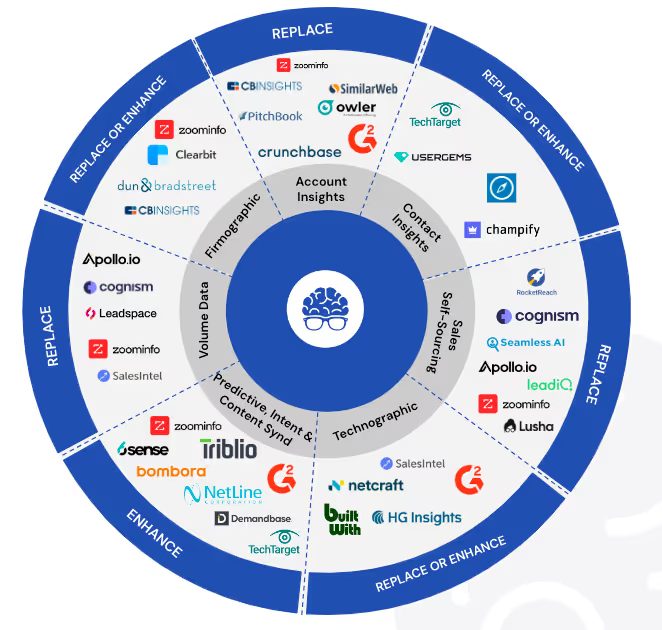There’s a line I hear all the time in revenue conversations: “The account is surging.”
And my first question is always: who?
Another one: “They’re in-market.”
Great. Which human?
This is the central flaw in the way most of B2B sales has been wired for the last decade. The intent data revolution promised precision, but what we’ve been left with is vagueness at scale—teams chasing shadows, cold calling ghosts, and emailing abstractions, while the real buyer has already signed with a competitor.
The Problem With “Account-Level” Intent
We’ve mistaken the map for the territory.
The account-level surge model looks clean on a dashboard. But it hides a messy truth: accounts don’t buy things. People do. Accounts don’t feel pain. Humans do. Companies don’t raise their hand and say, “We’re ready to evaluate.” A person—usually one with a title, a budget, and a deadline—does.
Yet most intent platforms still stop at the “account” layer. They’ll tell you something is happening, but not who is doing it. It’s like being told there’s a fire somewhere in the building, without knowing which room is burning.
And so reps guess. They cold-call. They blast emails. They open conversations with lines like:
- “I saw your company was showing intent.”
- “Looks like you’re researching solutions.”
- “We noticed a surge in activity.”
This isn’t personalization. It’s noise dressed up as insight.
Contact-Level Signals: Turning the Lights On
The shift that’s underway is simple, but radical: the move from account-level intent to contact-level technographics.
Contact-level signals don’t tell you “the account is active.” They tell you:
- Who is researching,
- What they’re engaging with,
- When they’re ready to talk.
That’s not a ghost story. That’s a roadmap.
It’s the difference between fumbling in the dark and flipping on the lights. Suddenly, reps know exactly which engineer just committed Python code, which marketer just downloaded your eBook, which VP just posted a hiring surge for their data science team.
This is the frontier: intent tied to individuals, not abstractions.
Data Alone Won’t Save You
But let’s pause here, because there’s another trap.
Even with the best contact-level intent data in hand, outreach can still fail. Why? Because data without intelligent delivery is just another blunt instrument.
The harsh truth: bad openers kill good signals.
“Hey, I saw you were on our website.” Delete.
“I noticed your company was surging.” Trash.
“It looks like you’re researching.” Ghosted.
The challenge isn’t just in knowing who to talk to—it’s in knowing what to say. That’s why frameworks like KPICC (Know, Problem, Impact, Connect, Call to Agreement) matter. They discipline sellers to go beyond the “I saw this” opener, and instead speak to a person’s actual context, pain, and priorities.
When reps do this well, conversion rates don’t just tick up—they multiply.
Why This Matters Now
The stakes are higher than ever. Every sales team is under pressure to produce more with less. Buyers are inundated with noise. Trust is scarce. Attention is fleeting.
In this environment, vague account-level surges aren’t just insufficient. They’re a liability. They waste time, erode credibility, and make your competitors look smarter when they’re not actually smarter—they’re just talking to the right person at the right time.
That’s why contact-level technographics aren’t just a “nice to have.” They’re the competitive edge.
Teams that make the shift stop guessing. They stop chasing ghosts. And they start winning.
The Future of Sales Is Human
This is what it all comes down to: B2B sales is still, and always will be, about people. Real people with pain, urgency, agency, and choice.
If you’re still betting your go-to-market on accounts “in market,” you’re already behind. The future belongs to those who can light up the individuals behind the intent—and engage them with relevance, not guesswork.
That’s where LeadGenius lives. Not in abstractions, but in clarity. Not in ghost chasing, but in illuminating the buyers who matter most.
👉 The question isn’t whether intent data matters. It’s whether you’re ready to make it human.




